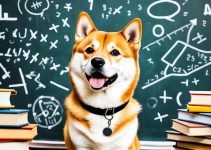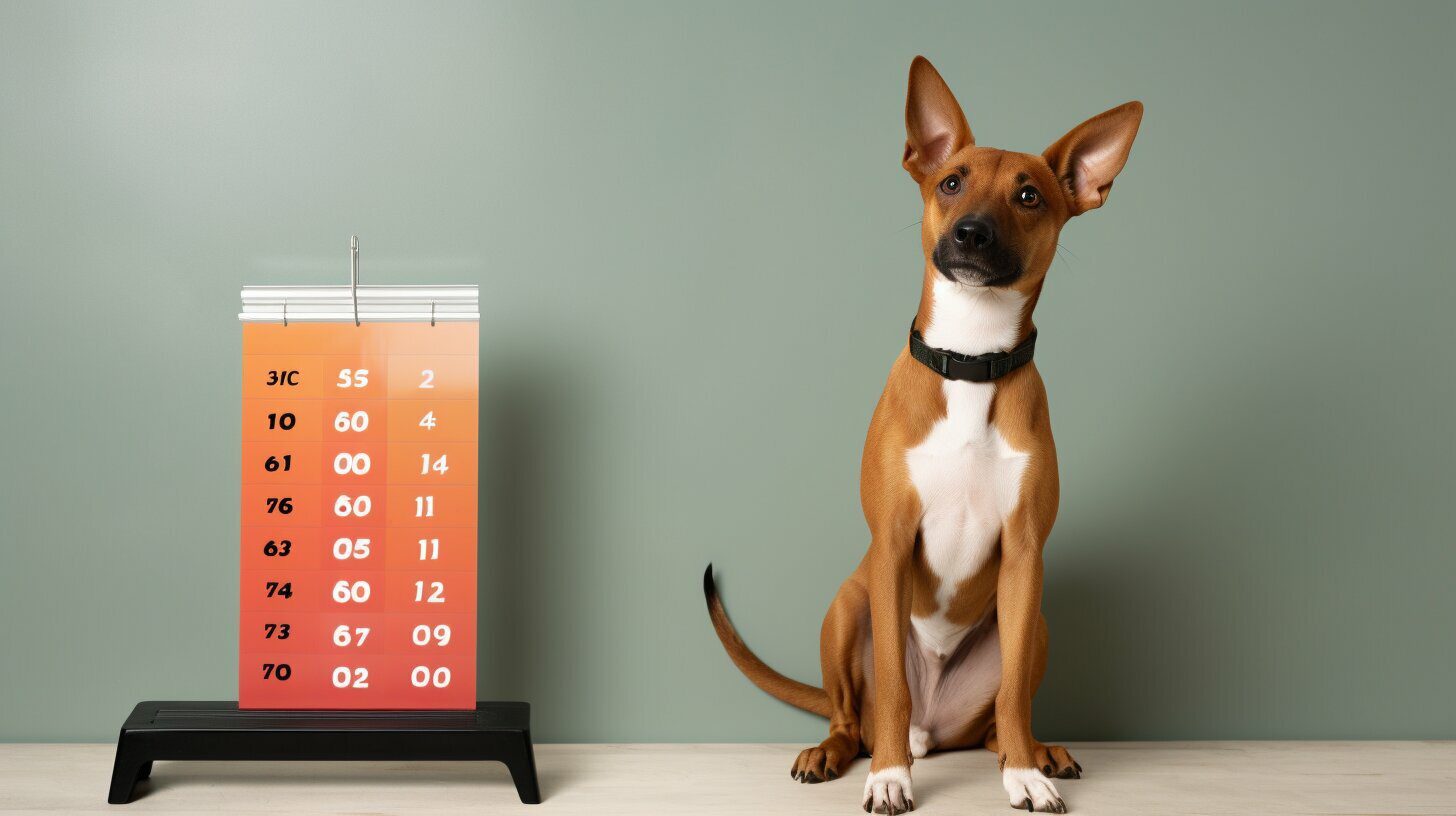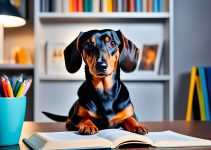Dogs can get poison ivy, and it’s essential to know how to spot the symptoms and treat them if your dog does come in contact with the plant. Poison ivy is a common weed that grows in many parts of the United States, so it’s important to learn how to protect your pet from it. In this post, we’ll discuss what poison ivy is, what symptoms to look for in dogs, and how to treat the illness if your pet does get sick. Stay safe out there!
What is Poison Ivy?
Poison ivy is a plant that contains an oil called urushiol. This oil is found in the leaves, stems, and roots of the plant and can cause an allergic reaction when it comes into contact with the skin. Urushiol is also found in other plants, such as poison oak and poison sumac.
When urushiol comes into contact with the skin, it causes redness, swelling, itching, and blistering. The reaction usually starts within 12-48 hours after exposure and can last for several weeks. In severe cases, the response can lead to life-threatening anaphylaxis.

Can Dogs Get Poison Ivy?
Dogs are just as susceptible to poison ivy as humans are, so it’s important to be on the lookout for this plant if you take your dog for walks in wooded areas or let them play outside in your yard.
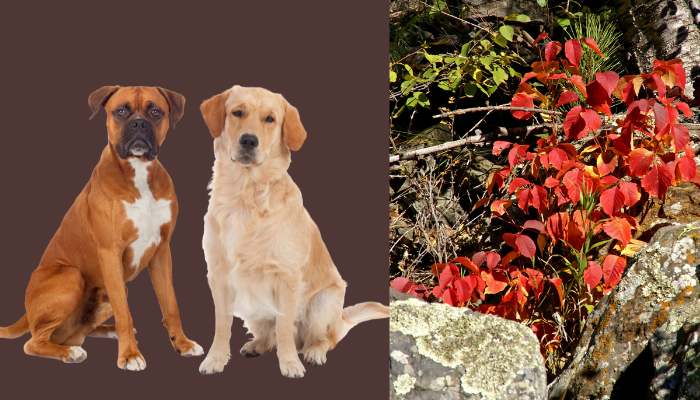
How Do Dogs Get Poison Ivy?
There are three ways that dogs can come into contact with poison ivy: by touching the plant directly, by contacting something that has been in contact with the plant (like your clothes), or by ingesting the plant.
The most common way that dogs get poison ivy is by coming into direct contact with the plant. Poison ivy grows as a vine or shrub and can be found in wooded areas, fences, or gardens. If your dog brushes up against poison ivy, the plants’ oils will transfer to their fur and skin.
Dogs can also get poison ivy indirectly by contacting something that has been in contact with the plant—like your clothes. For example, if you’ve been hiking through an area where poison ivy is present and pet your dog, the oils from the plant will transfer to their fur. Your dog may also develop a rash if they sleep in your bed after you’ve been in contact with poison ivy.
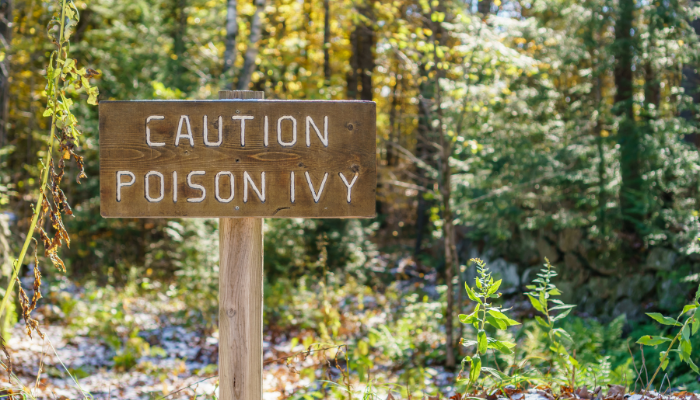
If your dog eats poison ivy — leaves, stems, berries—they may start to show symptoms of a reaction within a few hours. Symptoms of ingesting poison ivy include vomiting, diarrhea, and difficulty breathing. If you think your dog has eaten any part of the poison ivy plant, it’s important to seek veterinary care immediately as they may need to be hospitalized for treatment.
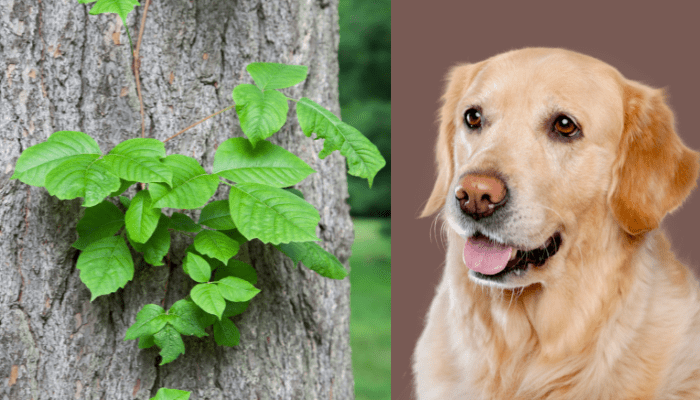
Poison Ivy Rash Common Symptoms
If you think your dog has come into contact with poison ivy, look for the following symptoms:
* Itching
* Swelling
* Redness
* Blistering
* Hives
Poison Ivy symptoms in dogs are similar to the signs in humans. If your dog has come into contact with poison ivy, you may notice that they start to lick or chew at its skin obsessively. They may also begin to scratch their skin vigorously.
These actions can lead to more irritation, and further spread the rash. You may also notice that your dog’s skin turns red and swells. In severe cases, your dog may experience difficulty breathing or swallowing if the swelling spreads to its throat or face.
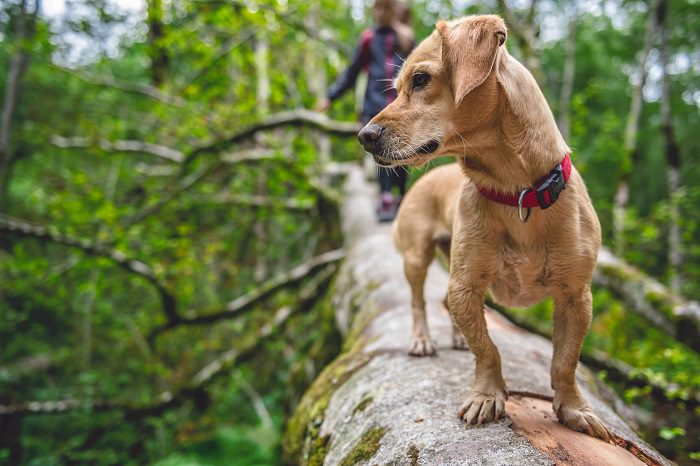
If your dog displays any of these symptoms, it’s important to wash its fur as soon as possible. This will help remove any urushiol present and lessen the severity of their reaction. You should also contact your veterinarian immediately so they can prescribe medication to help relieve your dog’s symptoms and prevent further irritation. They may also recommend a corticosteroid injection or oral antihistamine in severe cases.

Risks of Dogs and Poison Ivy to Humans
Like most pet owners, you probably know that coming into contact with poison ivy can cause an itchy, uncomfortable rash. But did you know that the oils from poison ivy can also be transferred to your dog’s fur? And if you happen to pet your dog while he’s wearing these oils, you could end up with a nasty case of poison ivy yourself if touches your exposed skin.
In addition to causing an itchy rash, poison ivy can also lead to swelling and blistering of the skin. In severe cases, it can even cause anaphylactic shock. So, it’s important to look for signs that your dog has been in contact with poison ivy. These signs include excessive licking or scratching of the skin, redness or swelling of the skin, and hair loss. If you notice these symptoms, take your dog to the vet immediately.
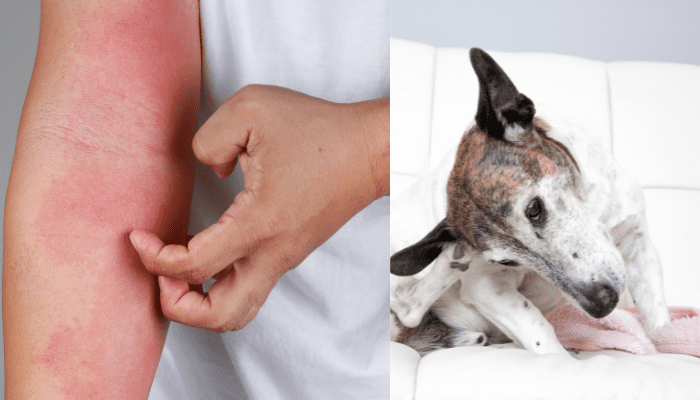
Treatment of Poison Ivy for Dogs
The first thing you need to do is identify the poison ivy. Poison ivy typically has three leaves and is found in wooded areas. If you’re not sure if what your dog came into contact with is poison ivy, consult your veterinarian or a professional landscaper.
Once you’ve identified the plant, you need to take action to treat your dog’s rash. The best way to do this is to bathe your dog with dawn dish soap or oatmeal shampoo as soon as possible after he comes into contact with the plant. This will help remove the urushiol oil, which causes the allergic reaction, from your dog’s skin.
If your dog has a severe reaction, you may need to consult your veterinarian for further treatment. In extreme cases, oral or topical steroids may be necessary to reduce swelling and itching. For less severe reactions, over-the-counter antihistamines may be enough to provide relief.
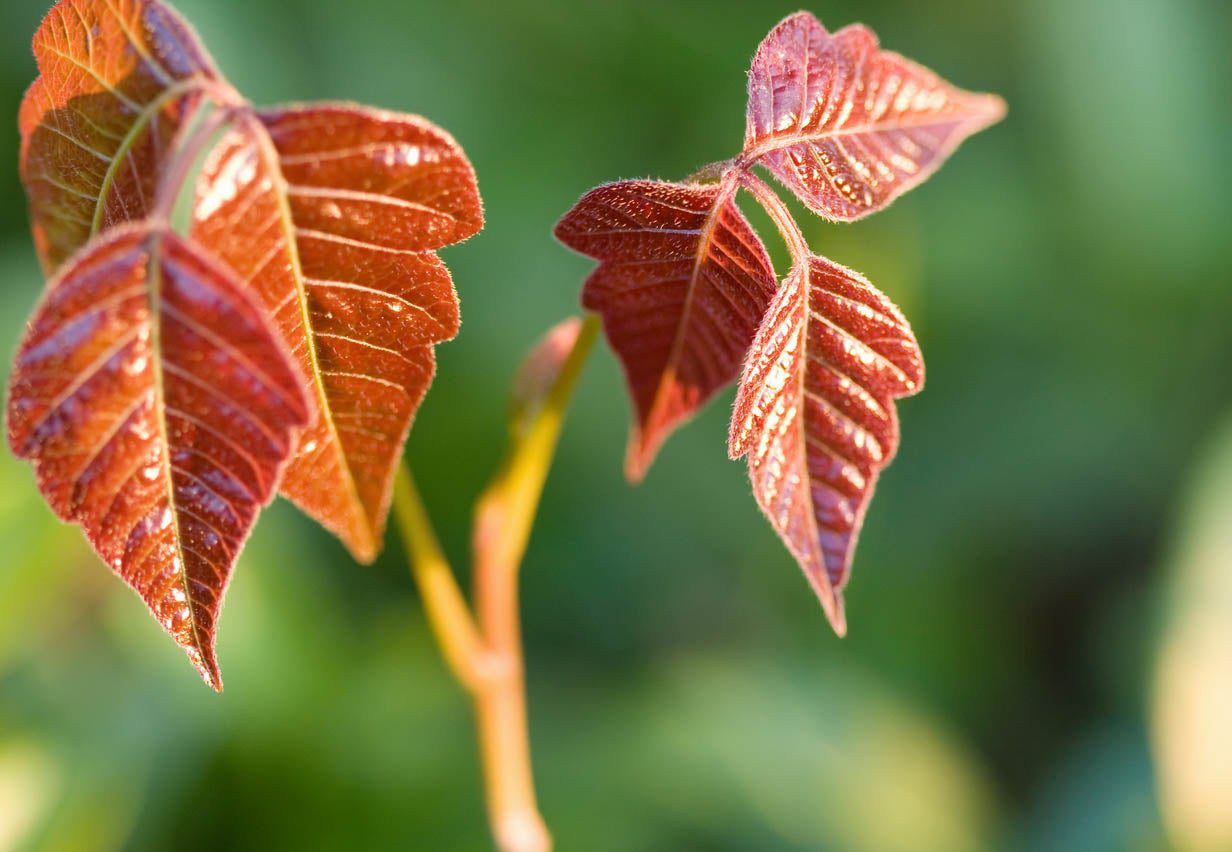
Are Some Breeds More Prone to Having Allergic Reactions to Poison Ivy Than Others?
Several factors can contribute to a dog’s susceptibility to an allergic reaction to poison ivy. These include the thickness and length of the coat, the size of the skin’s pores, and the immune system’s overall health. Breeds most prone to allergic reactions to poison ivy include Golden Retrievers, Labrador Retrievers, Standard Poodles, Bichon Frises, and Lhasa Apsos.
If you live in an area where poison ivy is prevalent, it’s important to take steps to prevent your dog from coming into contact with the plant. Some tips for doing this include keeping your dog on a leash when walking in areas where poison ivy is present, regularly inspecting your dog for signs of contact with poison ivy (redness, swelling, itching), and bathing your dog as soon as possible if they do come into contact with the plant.
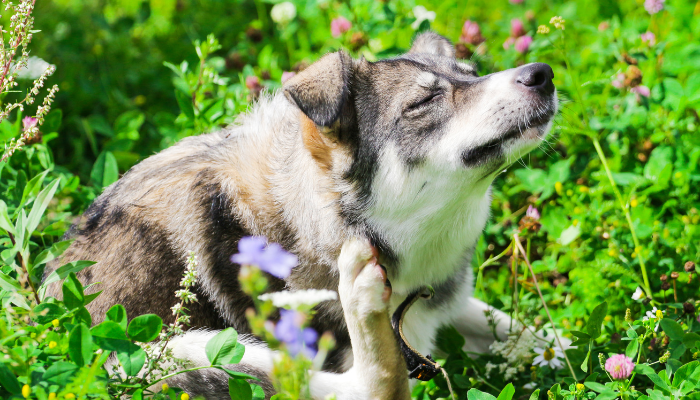
How to Treat Poison Ivy
The first thing you need to do is identify the poison ivy. Poison ivy typically grows as a vine or shrub and has three glossy leaves. The leaves are green in the spring and summer and turn red or orange in the fall. If you’re not sure whether what your dog came in contact with is poison ivy, it’s always best to err on the side of caution and consult your veterinarian.
Once you’ve confirmed that your dog has a poison ivy rash, there are a few things you can do to treat it at home. The first is to give your dog a bath with warm water and dawn dish soap. This will help remove the oils from the plant that are causing the irritation. You can also try applying a cool compress to the affected area for 10-15 minutes at a time. This will help soothe any itching and inflammation.
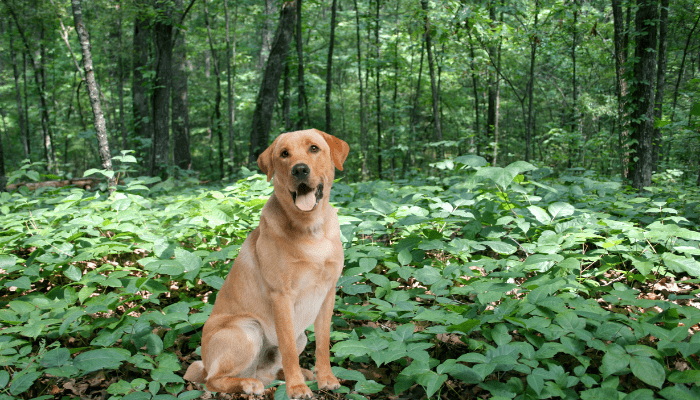
If your dog is still scratching excessively, you may need to seek medical attention from your veterinarian. They may prescribe a topical corticosteroid cream or an oral antihistamine to help relieve the itchiness. In severe cases, they may also recommend giving your dog a short course of oral steroids.
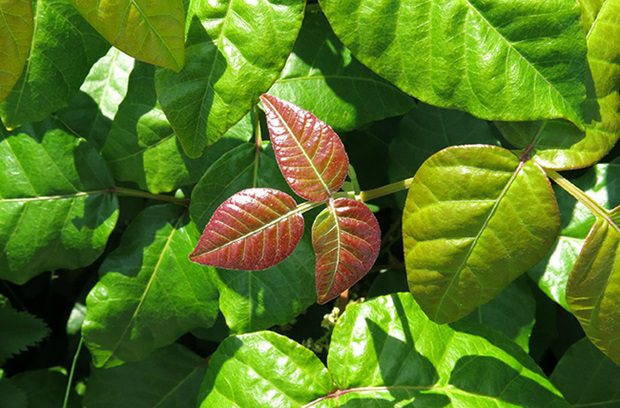
How to Prevent Poison Ivy in Dogs
The best way to prevent poison ivy in dogs is by keeping them away from the plant’s growth areas. For example, if you take your dog for walks in wooded areas or let them play in your yard, check for poison ivy plants before allowing them off-leash and steer clear of any area containing those types of plants.
If you find any poison ivy plants on your property, remove them immediately by wearing gloves and long sleeves and disposing of them properly so your dog cannot come into contact with them again.
Finally, wash your dog’s fur thoroughly if they have been in an area where poison ivy grows, as urushiol can stay on its fur for up to six weeks after exposure.
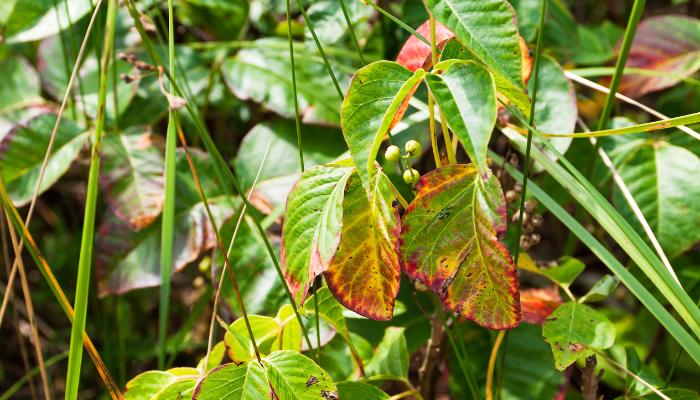
What is Poison Oak?
Poison oak (Toxicodendron diversilobum) is a plant that’s found in wooded areas throughout North America. It can grow as a shrub or a vine, and it produces an oil called urushiol. Urushiol is what makes poison oak poisonous; when it comes into contact with skin, it can cause a severe allergic reaction. Symptoms of a poison oak allergy include itching, swelling, redness, upset stomach and blistering. In severe cases, it can lead to anaphylactic shock.
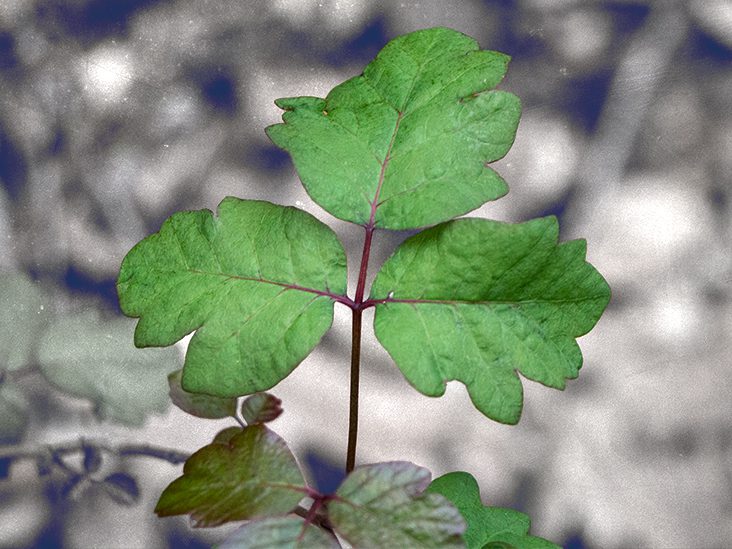
How to Keep Your Dog Safe from Poison Oak
The best way to keep your dog safe from poison oak is to avoid areas where the plant is known to grow. If you’re hiking or camping in an area where poison oak is present, keep your dog on a leash and make sure they don’t come into contact with the plant. If you think your dog has been exposed to poison oak, wash its fur as soon as possible with soap and water. And if they develop any symptoms, take them to the vet right away.
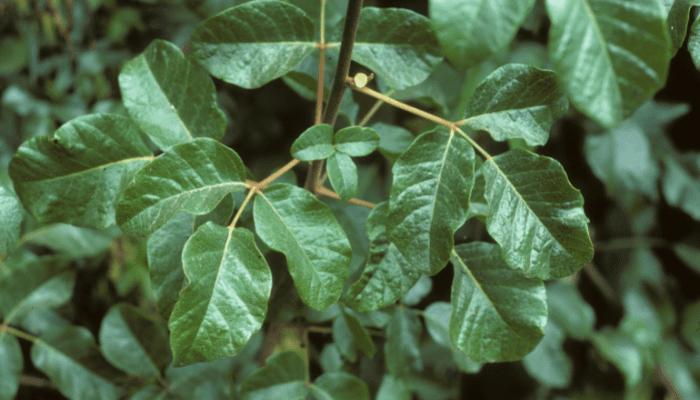
When to Seek Veterinary Help for Your Dog’s Poison Ivy Exposure
If your dog has been exposed to poison ivy, there are a few signs that you should look out for that may indicate that your dog needs to see the vet. These signs include:
- Excessive scratching or biting at the affected area
- Redness or swelling of the skin
- Blisters or pus-filled bumps
- Hair loss or bald spots
If you notice any of these signs, it’s important to take your dog to see the vet as soon as possible so that it can be treated and prevented from getting worse. In some cases, poison ivy exposure can lead to a secondary bacterial infection, which can be extremely dangerous for your dog.
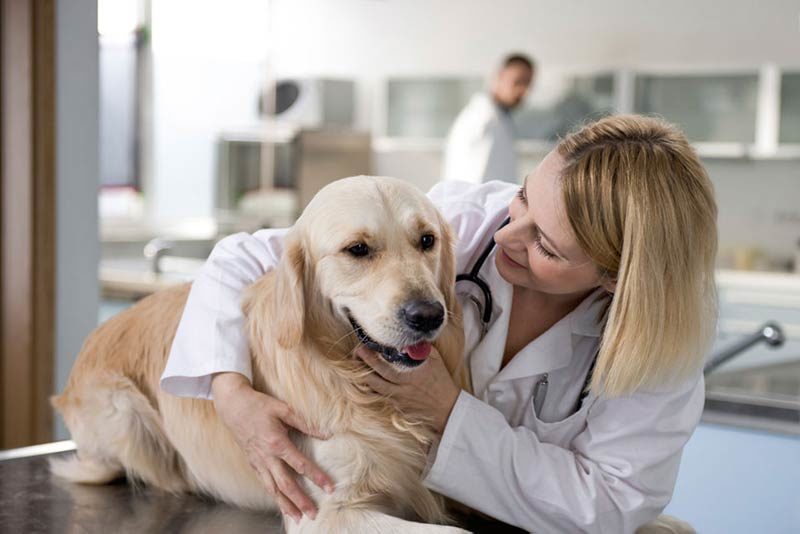
Conclusion
If your dog comes into contact with poison ivy, it’s important to act quickly. Give them a bath with dish soap and water to remove the oils from their fur, and apply a cool compress to the affected areas. If the itching persists, take them to see the vet as they may need medication to relieve the symptoms. Remember, the best way to prevent poison ivy exposure in dogs is by avoiding areas where the plant grows and keeping them away from any plants that you suspect may be poisonous.
Frequently Asked Questions
HOW LONG DOES IT TAKE FOR POISON IVY TO SHOW UP IN DOGS?
Around 3 to 7 days If you notice your dog has an itchy rash, be sure not to scratch the area and try keeping them away from water for at least three days. If this does not work or there are blisters filled with fluid in more severe cases, then see a vet immediately.
CAN DOGS CATCH POISON IVY FROM HUMANS?
The only way for your dog to get poison ivy is if they come into contact with it. So it’s rare but not impossible.
IS IT OK TO PUT CALAMINE LOTION ON DOGS?
Calamine lotion. Don’t use calamine products on your pet because they can cause uncomfortable GI issues and anemia. Zinc oxide in these rubbing alcohol alternatives could also affect red blood cells, making him sicker than before.
HOW MUCH IVY IS POISONOUS TO DOGS?
Ivy is known to be poisonous if ingested by dogs. The leaves and stems of the plant contain toxins that can cause vomiting, diarrhea, or even death in larger quantities, but these effects are rare since most pets only eat small pieces at one time without realizing what’s inside their meal.



